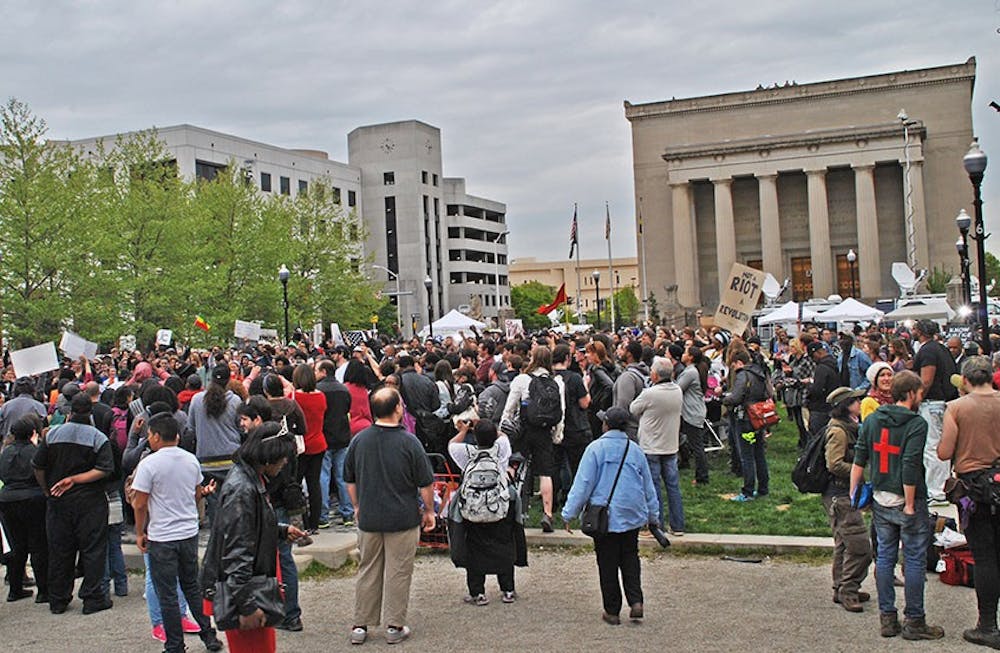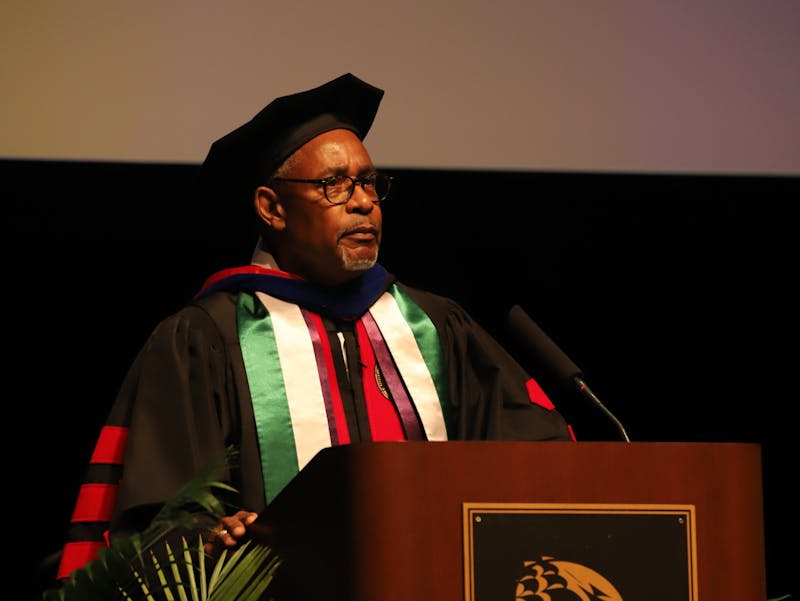Within the last week, whenever someone brought up Baltimore in conversation, it was not uncommon for people to think of another city in such chaos and lawlessness.
“I would imagine it’d be a very scary time for the people there, right now. I know there are a lot of people feeling repressed, but I don’t think the best way for them to express it is through violent protesting,” said Paige Parkhurst, a Shippensburg University freshman. “I would like to go to see for myself, what’s actually going on, because I don’t know if how the media is portraying it is accurate, but I would be a little nervous.”
SU Sophomore Justin Lee said the picture in his mind of Baltimore, right now, is absolute turmoil. He said his mother is an alumna of Delta Kappa Gamma, an educational fraternity, and they planned to have an awards ceremony in Baltimore this July, but it was recently cancelled, due to the protests.
“They have no idea how long this is going to last,” Lee said.
With the image of mayhem and brutality painted in the minds of many, one may not typically expect Baltimore protesters to be peaceful.
On May 1, the smell of burning sage floated through the air and helicopters hovered over the crowds. Hundreds of people gathered to celebrate the decision of Baltimore chief prosecutor, Marilyn Mosby, to charge the six Baltimore police officers connected with the arrest and death of Freddie Gray, who was a young black resident of Baltimore.
“What do we want? Justice! When do we want it? Now!” echoed the assembled supporters for Gray, who allegedly suffered a fatal injury to his spine was denied medical attention, while in police custody.
Attendants surrounded guest speakers, talking about Gray’s death, equal rights and justice for Baltimore, both in English and Spanish.
“They call violence the breaking of a window. They call violence the throwing of a bottle. My definition is a little different,” said Rev. Heber Brown of Pleasant Hope Baptist Church in Baltimore. “Violence is not refusing to go indoors after curfew. It is refusing to go outside for justice in the daytime.”
The next speaker advocating for change was Kathy Howell from Service Employees International Union (SEIU), which is a labor union. Howell is the district leader for the Washington, D.C., Virginia and Maryland areas, and she discussed how equality is an issue beyond Gray.
“The only way change is going to come about is if we all stand together and fight for justice for all,” she said. The crowd then broke into a chant. “No justice, no peace!”
Those chanting were not only African Americans, but people from all races, cultures and religions.
“Jewish Sabbath starts tonight and, normally, I would be preparing for that, but I’m here tonight because this matters,” said Rabbi Daniel Burg, of Beth Am synagogue in Baltimore. A monstrous roar of applause followed and Burg continued to preach to the crowd concerning how we must not stand by, idly, at the blood of our neighbor.
Following the speeches and chants, protesters then marched in the streets of Baltimore. Many proudly raised their signs with messages such as “Black Lives Matter,” “Stop Killing Us” and “Baltimore United,” written on anything from paper to pizza boxes.
The crowd marched down Fayette to Light Street, which led into the inner harbor. Then they looped back to city hall, chanting “All night, all day, we will fight for Freddie Gray!”
Even as supporters took their final steps back to city hall, the rally was not over. Continuing the celebration over Mosby’s decision, a parade of cars flooded the streets with endless honking and cheering. Supporters jumped on the hoods of their cars and hung out windows giving fist bumps to those outside and shouting for immediate justice.
Throughout Friday afternoon, the Maryland National Guard and Baltimore police were scattered in the streets in case an emergency broke.
“We are here to ensure the safety of ourselves and all of the people who are here,” one guard member said.
SU junior and National Guard member Bradley Foreman received a call at 6 a.m. on Thursday, telling him that he needed to be in Baltimore to monitor the protests. He described Friday’s parade as relatively uneventful compared to the violent outbreaks on Monday, April 27, which occurred before the soldiers were called in.
“It’s possible nothing happened because of the sheer number of terrifying equipment and personnel ready to act if things got out of hand, but we didn’t have to, so it’s hard to say if our being there was necessary,” Foreman said. “All I know is that, after Monday, there was little to no violence or looting.
“Baltimore is not a pit of anarchy and destruction, like people seem to think. The citizens were super divided on our presence; we got a lot of love and hate, and so did the protesters. From talking with people on both sides of the issue, the march seemed ineffective. People on that side were all about it, but those against were annoyed that everything was closed down, and I think the message was falling on deaf ears.”
Even though the protesters’ message may or may not have been ignored, Foreman believes that when the soldiers go home, they will not resort to violence, again.
“Many of the demonstrators were appeased with the news of the charges, and the police’s power to do anything was cut severely over the last few days. Additionally, people on both sides will be grateful to see the curfew lifted.”




The Slate welcomes thoughtful discussion on all of our stories, but please keep comments civil and on-topic. Read our full guidelines here.